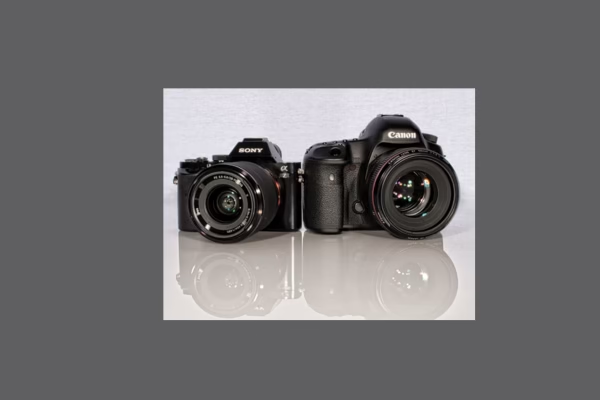Understanding Colour Temperature and Its Use in Photography
In the world of photography, one of the most crucial yet often overlooked aspects is temperature. temperature, measured in Kelvin (K), plays a significant role in how images are captured, processed, and perceived. This article delves into the concept of colour temperature, its impact on photography, and how photographers can harness it to improve their images.
What is Colour Temperature?
Colour temperature refers to the colour characteristics of light. It is a way to describe the hue of a specific light source. Different light sources emit light that ranges from warm (yellow, orange, red) to cool (blue, white). The term “colour temperature” is derived from the concept of heating an object until it glows in a certain colour. For instance, when a metal is heated, it might start glowing red, then orange, yellow, and eventually white as the temperature rises. In photography, colour temperature is quantified in Kelvin (K), where lower values represent warmer colours, and higher values represent cooler, bluer tones.
The Kelvin Scale in Photography
The Kelvin scale ranges from about 1000 K (candlelight) to 10,000 K or higher (overcast skies or daylight). Here’s a brief breakdown of some common colour temperatures and their associated light sources:
- 1000 – 2000 K: Candlelight or very warm light, producing a deep orange or yellow glow.
- 3000 K: Incandescent light bulbs, producing warm, yellowish light.
- 4000 – 4500 K: Typical fluorescent lighting, offering a neutral white tone.
- 5000 – 6000 K: Daylight or sunlight at noon, which is a neutral to slightly cool white.
- 6000 – 8000 K: Overcast skies, giving off cooler, bluish light.
- 10,000 K or more: Shade or light in deep blue tones.
Photographers adjust their camera settings to either match or correct for these different light temperatures in order to produce natural, accurate, or artistically styled images.
The Role of White Balance
White balance (WB) is a camera setting that compensates for colour temperature, ensuring that white objects appear white, regardless of the light source. When a camera is set to the wrong white balance, colours can appear unnaturally warm (yellow/orange) or cool (blue). By adjusting the white balance settings, photographers can neutralize or intentionally exaggerate the colour temperature, leading to more realistic or creative effects.
Modern cameras come with several pre-set white balance options, such as:
- Auto: The camera decides the white balance based on the scene.
- Daylight: For shooting in natural daylight or sunny conditions.
- Cloudy: Warmer tone for overcast conditions.
- Tungsten: Used for incandescent light, producing cooler, bluer images to offset the yellowish tone of the light.
- Fluorescent: Adjusts for the greenish tint of fluorescent light sources.
- Flash: Adjusts for the cooler light of a camera flash.
While auto white balance does a good job in most conditions, photographers may prefer to manually adjust the white balance to achieve a particular mood or aesthetic.
The Impact of Colour Temperature in Photography
- Mood and Atmosphere
The colour temperature can drastically change the mood of an image. Warm colours (below 5000 K) tend to evoke feelings of warmth, comfort, and intimacy, while cooler colours (above 6000 K) often create a sense of calm, detachment, or even sadness.
For example, a sunset or candlelit dinner will have a warm, inviting glow, emphasizing romance or nostalgia. On the other hand, a winter scene or an image of an overcast day will feel more subdued and cooler, conveying feelings of solitude or coldness. By manipulating the colour temperature, photographers can use light to tell a story or invoke specific emotions.
- Skin Tones and Realism
When photographing people, capturing accurate skin tones is essential for a natural look. Colour temperature affects how skin tones appear. Under warm light (such as incandescent bulbs), skin may appear orange or yellowish, while under cooler light (like daylight or overcast skies), skin may appear too pale or blue.
Understanding how to control colour temperature is crucial for portrait photographers who want to render skin tones accurately. In many cases, photographers will adjust the white balance settings to ensure the subject’s skin looks true to life. For indoor portraits, using tungsten or warm lighting may yield flattering results, while daylight or flash might be used for outdoor portraits.
- Creative Effects
Photographers often manipulate colour temperature intentionally to create artistic effects. For instance, adjusting the white balance to a cooler setting for a portrait can produce an edgy, futuristic look, while shooting with a warmer colour temperature can add a vintage or retro vibe.
In addition, some photographers use coloured gels on their lights to add a specific colour temperature to their scenes. For example, placing a blue gel over a light will create a cooler tone, while a red or orange gel will provide warmth. This technique is often used in studio photography, product photography, and conceptual art.
Managing Colour Temperature in Post-Processing
While it’s always best to capture the right colour temperature in-camera, many photographers also adjust the colour temperature in post-processing using editing software like Adobe Lightroom or Photoshop. These tools offer sliders that allow photographers to fine-tune the white balance after the photo is taken, enabling them to correct any colour imbalances or enhance the desired effect.
Color temperature is a fundamental aspect of photography that profoundly impacts how your images look. By mastering and adjusting color temperature, photographers can set the right mood, achieve accurate skin tones, and creatively shape their photos. Whether shooting a sunset, portrait, or conceptual scene, understanding how to fine-tune color temperature is key to achieving the desired result. Embrace the potential of light and experiment with various color temperatures to elevate your photographic expression.

